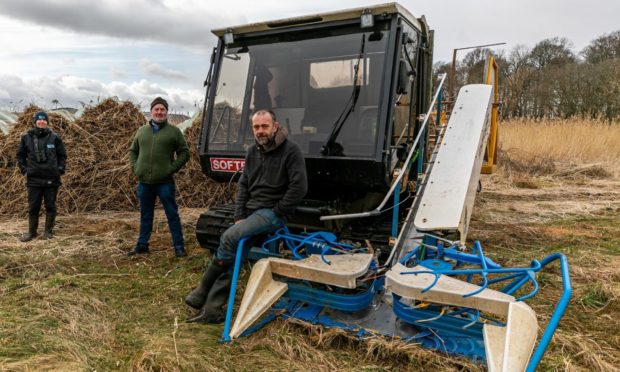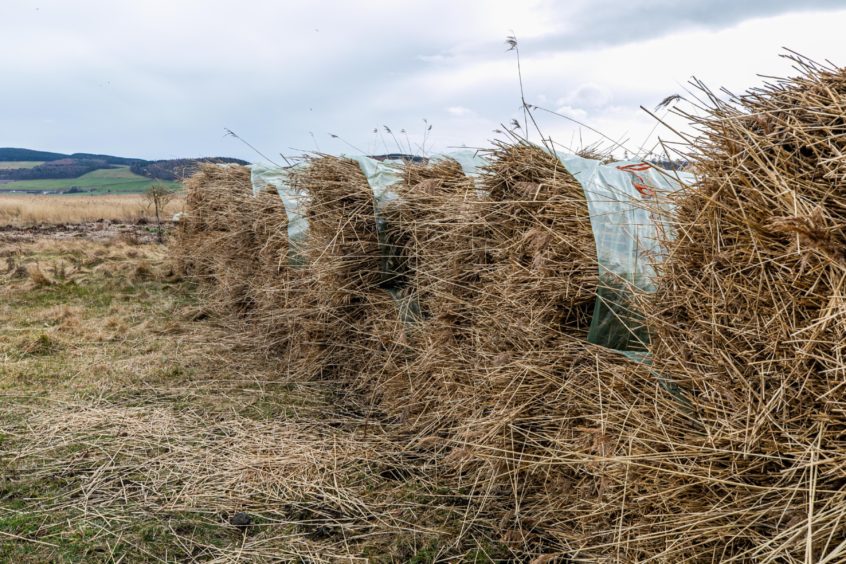Workers have began harvesting the Tay reedbeds for the first time since they were engulfed in a devastating fire last year.
The huge blaze in April 2020 sent 40ft pillars of smoke billowing into the air as the conservation area was torched underneath.
Almost two miles of reeds were lost as the fire raged on the riverbank around Errol, destroying the nests of rare bearded tits and marsh harriers as it spread westward.
However less than 12 months after the devastation, harvesting has once again began on the landmark.
Graham Craig, the last person have harvested the Tay reed commercially, was on site as work began again this week.
He wasn’t surprised to see the grasslands recover so quickly from the fire.
“After six months the stuff is back up to its full height,” he explained.
The reeds will now be cut on rotation with the plan to use the harvested natural material for thatching.
“The block that we cut this year, we’ll leave that for another four years before we cut it again so we have different densities,” said Graham.
After the fire, Graham said he believed the burnt crop amounted to 10 or 15 years standing reed that had never been touched.
The green shoots of recovery could already be seen as early as May last year when vegetation started to break through the charred surface of the riverside conservation area.
The phragmites reeds on the Tay can grow at a speed of up to three inches a day.
RSPB Scotland, which controls large swathes of the habitat has previously said the reed beds could take as long 12-18 months to grow back.
The wildlife organisation feared hundreds of chicks could be lost in the fire as it swept through breeding ground rare birds including the marsh harrier.
Fire crews rushed to the wetland at around 11.40am on April 27 as flames took hold following a long dry spell in the area,
Local helicopter pilot Guy Stephens took to the skies to drop 77,000 litres of water on the fire after spotting the flames from his kitchen window.
The River Tay reed beds are believed to have been planted by monks in the 16th Century as a guard against erosion and expanded a couple of hundred years later by work parties of Napoleonic troops, on day release from the prison at Perth which had been built to house them in 1812.

